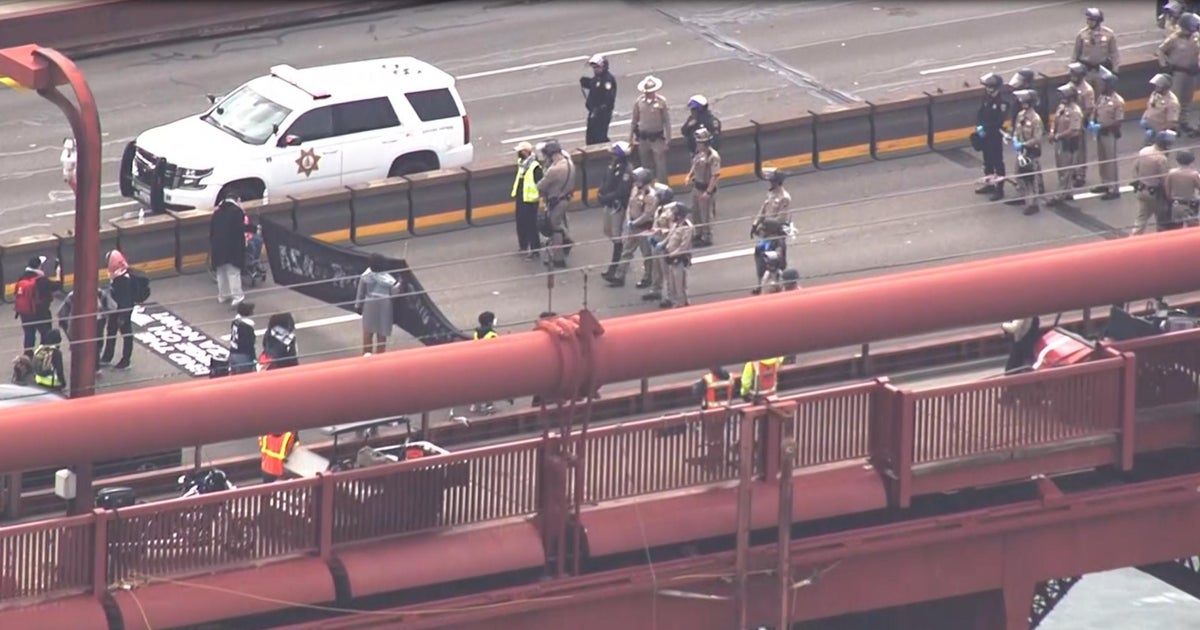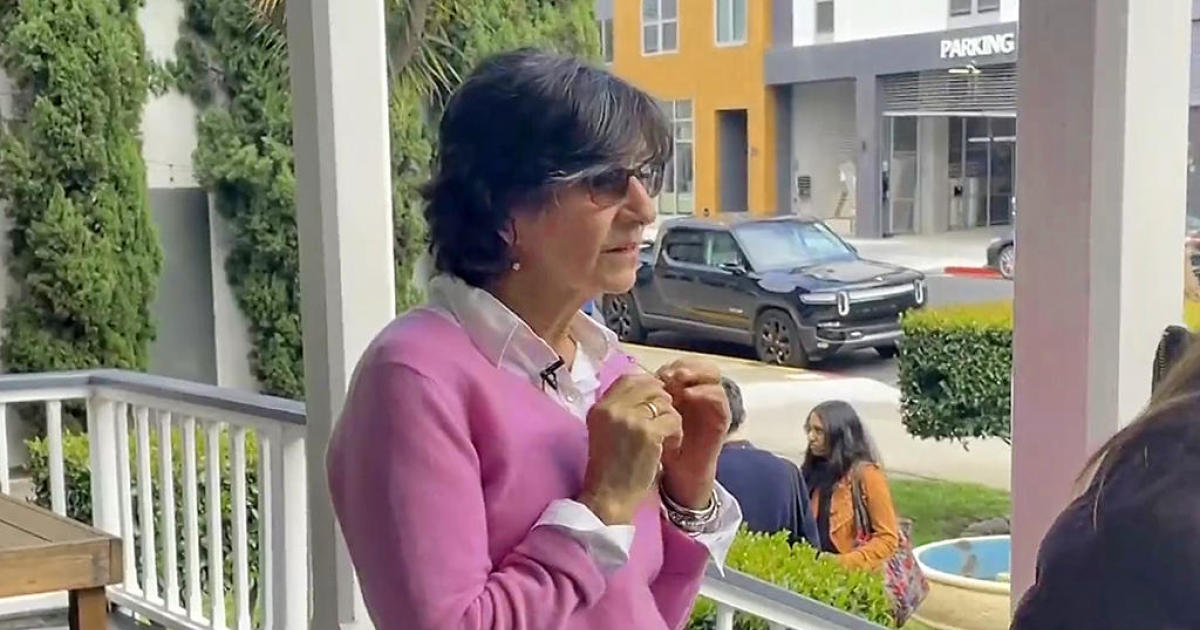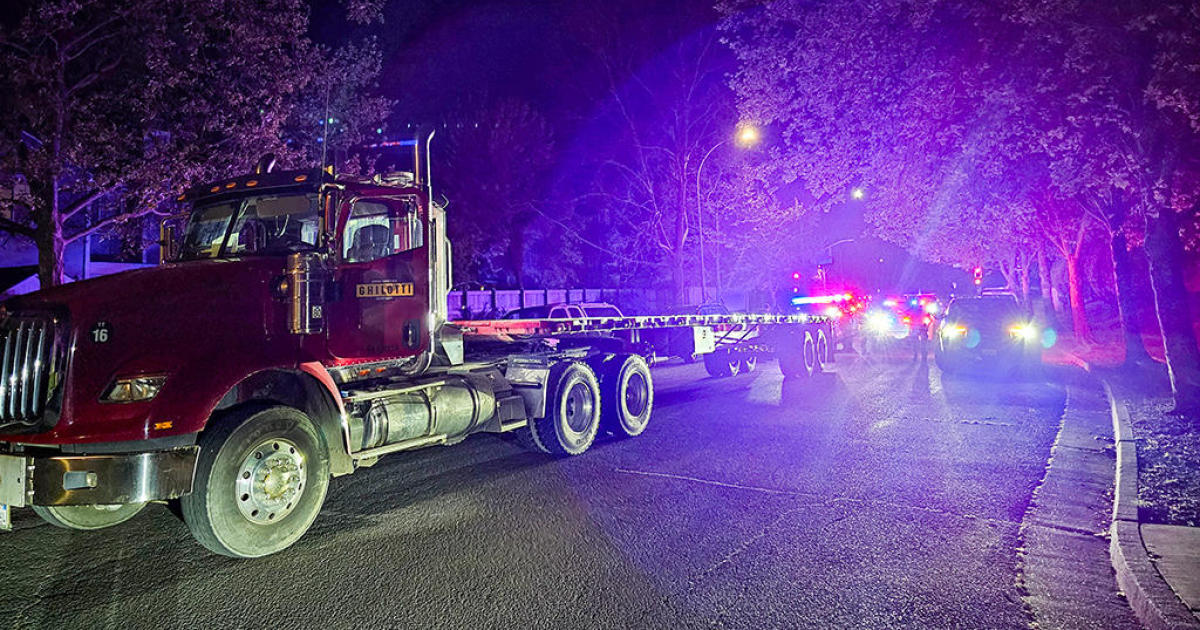Shuttle Endeavour Set For Bay Area Flyover
SAN FRANCISCO (CBS SF) - Space shuttle Endeavour was set Friday morning to make low, sweeping passes over the East Bay, San Francisco, Silicon Valley, Sacramento and Los Angeles following a return to its California roots Thursday.
The shuttle, fixed atop a specially modified Boeing 747 jet, is on the last leg of a wistful cross-country journey that paid homage to NASA workers and former astronauts.
Endeavour swooped out of the desert sky and glided down a concrete runway at Edwards Air Force Base, 100 miles north of Los Angeles, not far from where the now-retired shuttle fleet was assembled.
The shuttle and jumbo jet were scheduled to take off again at sunrise Friday.
RELATED LINK:
Watch Live Coverage Of The Flyover
The shuttle was set to make a low-altitude pass over an area near the Golden Gate Bridge at approximately 9:30 a.m., creating an epic moment for the thousands of space enthusiasts, photographers and others expected to come out to watch. The flight was pushed back an hour Thursday to allow more time for Bay Area fog to clear.
By about 10:30 a.m., the Endeavor is scheduled make a pass as low as 1,500 feet above the NASA Ames Research Center at Moffett Field in Mountain View.
KCBS' Mike Colgan Reports:
Bay Area residents are invited to view the passage at Moffett Field. The gates will open to the public at 6 a.m. to accommodate early arrivals, and Ames officials expect as many as 8,000 spectators to show up to the free event.
For those who can't make it out, Ames plans to webcast the flyover beginning at 8 a.m. online at www.ustream.tv/user/nasaames.
The Chabot Space and Science Center in the Oakland hills offers a "breathtaking vantage point" from which to take in the Endeavor's flyover, center officials said.
Chabot will open its doors at 8 a.m. for a viewing party and various space shuttle-related activities.
Admission tickets can be purchased online at www.chabotspace.org.
The exact timing and path of the ferry flight depend on weather conditions and operational constraints, according to NASA.
A NASA representative suggested the Bay Area Discovery Museum, Exploratorium and Lawrence Hall of Science as additional locations for viewing the flyby.
If the flight is postponed for any reason, additional information will be posted on Twitter at www.twitter.com/nasaames.
Endeavour's highly anticipated homecoming was twice delayed by stormy weather along the Gulf of Mexico. Early Wednesday, it departed from its Cape Canaveral, Fla., home base, soared over NASA centers in Mississippi and Louisiana, and made a layover in Houston, home of Mission Control. Crowds craned their necks skyward as the shuttle flew low over Florida's Space Coast and Houston.
After refueling in El Paso, Texas, Thursday, it flew over the White Sands Test Facility in New Mexico, an emergency shuttle landing site used once. Kelly requested that Endeavour sail over Tucson to honor former Arizona Rep. Gabrielle Giffords, who is recovering after suffering a head wound in a shooting rampage last year. Giffords was a member of the House committee on science, space and technology.
Endeavour's maiden voyage into space two decades ago ended with a planned touchdown at NASA's Dryden Flight Research Center based at Edwards. Unlike a return from orbit, no ear-splitting twin sonic booms accompanied the latest return.
Known as the baby shuttle, Endeavour was the last one built, replacing Challenger, which exploded during liftoff in 1986. NASA lost a second shuttle, Columbia, which broke apart during re-entry in 2003. A replacement was not built. Fourteen astronauts died in the accidents.
Endeavour flew 25 times, mostly to supply the International Space Station. It spent 299 days in space and circled Earth nearly 4,700 times, logging 123 million miles.
The space shuttle has deep roots in California: The main engines were manufactured in Los Angeles' San Fernando Valley. The heat shield tiles that protected the shuttle during re-entry were invented in Silicon Valley. The shuttle's "fly-by-wire" technology was developed in the Los Angeles suburb of Downey.
Shuttle parts from California and other plants around the country were shipped to Rockwell International's assembly factory in Palmdale near Edwards. For the early part of the shuttle program, landings occurred in the desert before switching to Florida. Edwards remained the backup landing site.
Endeavour is the second of three surviving shuttles bound for its retirement home. In April, Discovery landed at the Smithsonian Institution's annex in Virginia after victory laps around the White House, the Capitol and the Washington Monument.
Atlantis will remain in Florida and will be towed in November to the Kennedy Space Center's visitor center.
Enterprise, a prototype that flew in approach and landing tests but never went into space, sailed up the Hudson River by barge in June en route to the Intrepid Sea, Air & Space Museum.
After three decades of service, NASA permanently grounded the shuttles last year under a White House mandate to focus on destinations beyond low-Earth orbit with goals to land astronauts on an asteroid and eventually on Mars.
The shuttle's main job was hauling spare parts and cargo to the space station, which is near completion. Until private companies can provide regular taxi service to the giant orbiting lab, NASA is relying on Russian rockets.
NASA deeded Endeavour to the California Science Center last year. The estimated coast-to-coast shipping and handling costs is $28 million to be paid for by the science center. A final cost has not been calculated. NASA officials have said it didn't cost extra to fly over Tucson because it was on the way.
After landing at LAX Friday, Endeavour will undergo several weeks of preparations for its last mission: Inching through the streets of Los Angeles in early October to its museum home, a 12-mile crawl that required chopping down hundreds of trees and rerouting power lines.
For shuttle workers, it's a "bittersweet moment. The shuttle is finally retired and done. But for us, it's a great beginning of its next mission," said museum president Jeffrey Rudolph.
(Copyright 2012 by CBS San Francisco. All Rights Reserved. This material may not be published, broadcast, rewritten, or redistributed.)



